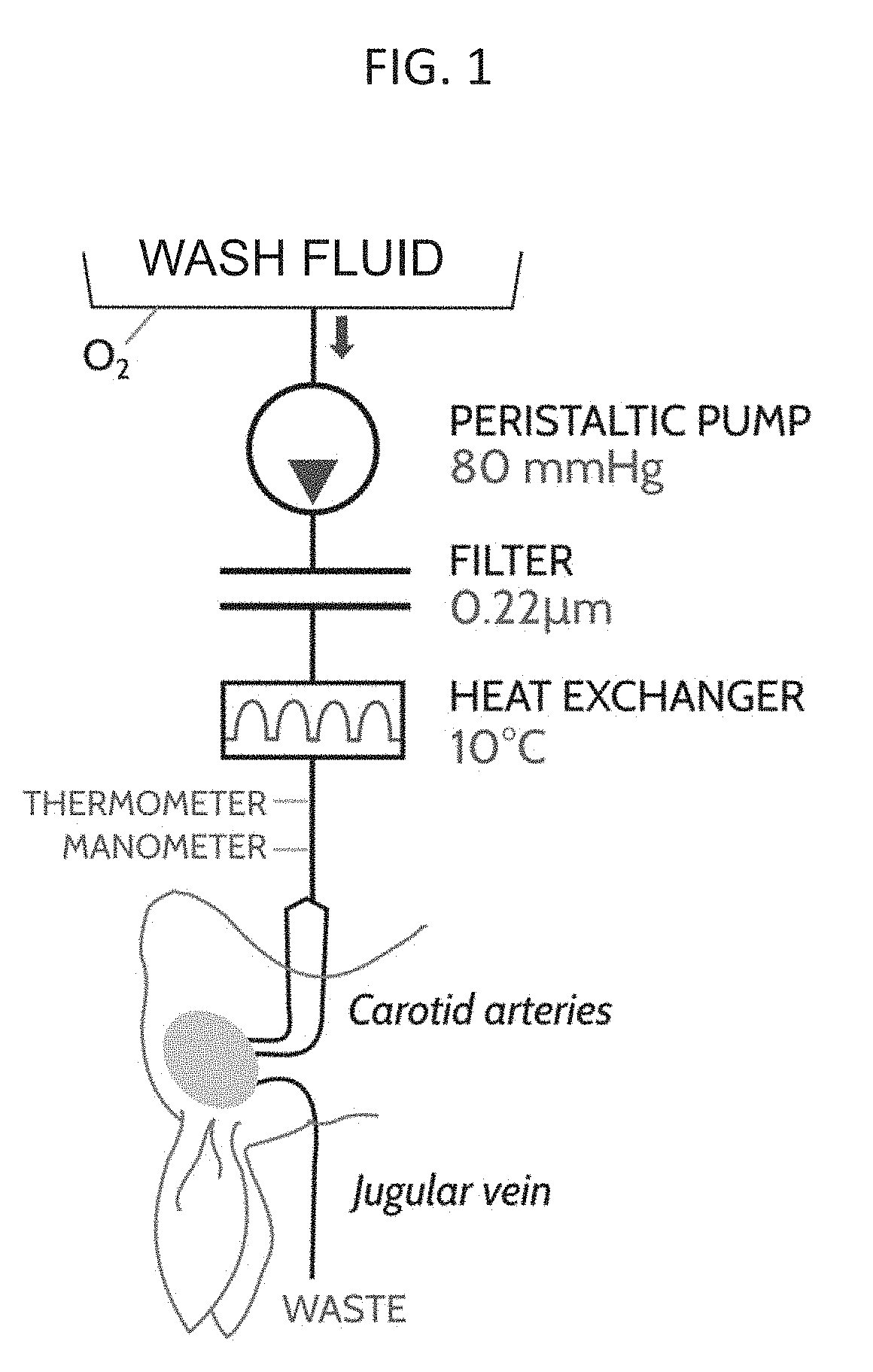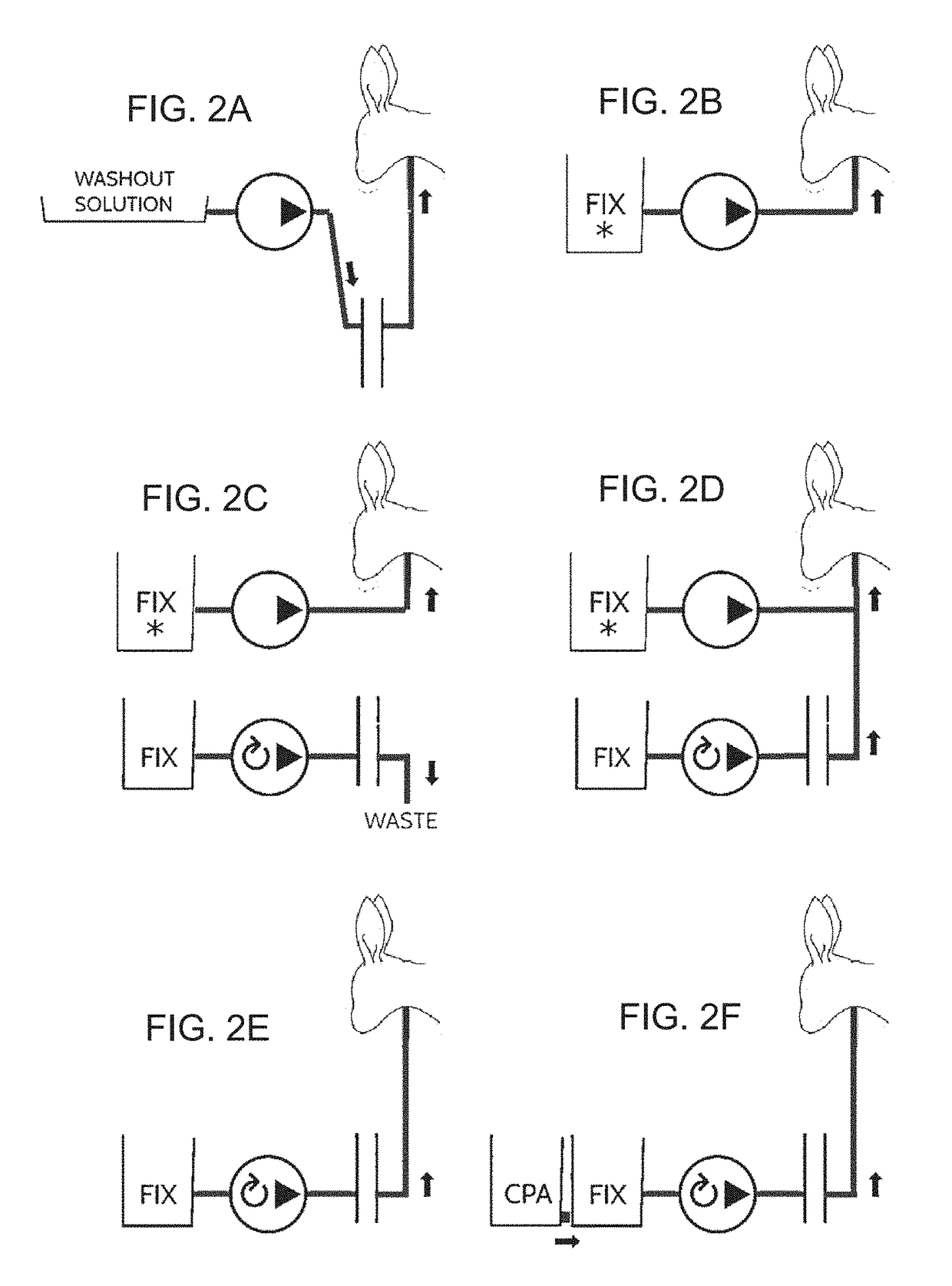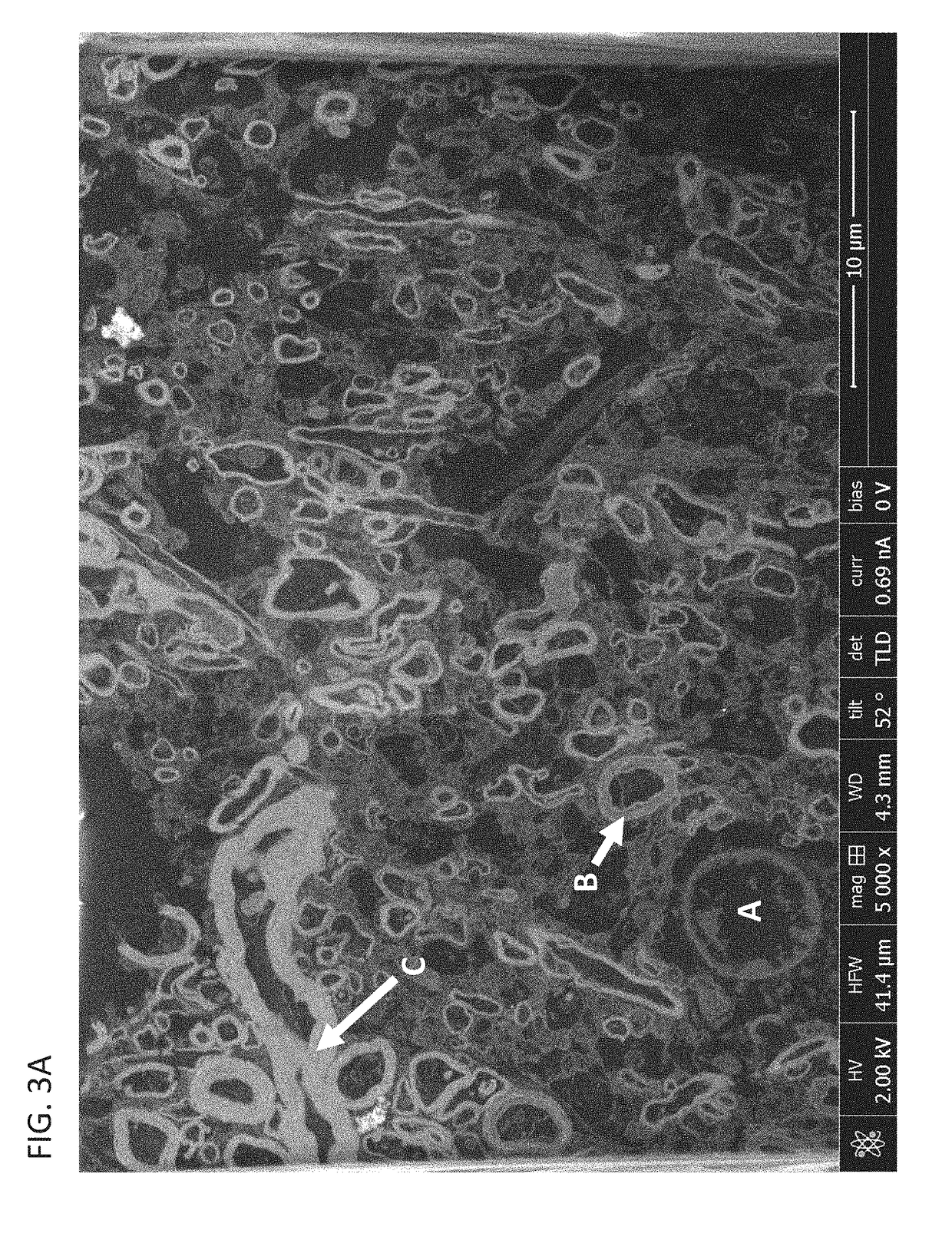Methods and compositions for the preservation of tissue
a tissue and composition technology, applied in the field of tissue preservation methods and compositions, can solve the problems of substantial ultrastructural damage and loss of protein and/or rna, and the inability to guarantee the static preservation of the brain ultrastructure for long-term storag
- Summary
- Abstract
- Description
- Claims
- Application Information
AI Technical Summary
Benefits of technology
Problems solved by technology
Method used
Image
Examples
embodiment 1
[0148]A method of preserving a tissue of a subject, comprising
[0149]washing the tissue by perfusing the tissue with a wash fluid comprising an aqueous solution;
[0150]fixing the tissue by perfusing the tissue with a fixation fluid comprising an aldehyde; and
[0151]cryoprotecting the tissue by perfusing the tissue with a cryoprotection fluid comprising a vitrification agent;
[0152]the wash fluid, the fixing fluid, or the cryoprotection fluid comprising a dye or a contrast agent.
embodiment 2
[0153]A method of preserving a tissue of a subject, comprising
[0154]washing the tissue by perfusing the tissue with a wash fluid comprising an aqueous solution;
[0155]fixing the tissue by perfusing the tissue with a fixation fluid comprising an aldehyde; and
[0156]cryoprotecting the tissue by perfusing the tissue with a cryoprotection fluid comprising a vitrification agent, the cryoprotection fluid having a vitrification temperature of about −80° C. or higher.
embodiment 3
[0157]A method of preserving a tissue of a subject, comprising
[0158]washing the tissue by perfusing the tissue with a wash fluid comprising (1) an aqueous solution, and (2) any one or more of an ion channel blocker, a calcium chelator, a thrombolytic agent, an anti-platelet, a respiratory poison, or a synaptic poison;
[0159]fixing the tissue by perfusing the tissue with a fixation fluid comprising an aldehyde; and
[0160]cryoprotecting the tissue by perfusing the tissue with a cryoprotection fluid comprising a vitrification agent.
PUM
 Login to View More
Login to View More Abstract
Description
Claims
Application Information
 Login to View More
Login to View More - R&D
- Intellectual Property
- Life Sciences
- Materials
- Tech Scout
- Unparalleled Data Quality
- Higher Quality Content
- 60% Fewer Hallucinations
Browse by: Latest US Patents, China's latest patents, Technical Efficacy Thesaurus, Application Domain, Technology Topic, Popular Technical Reports.
© 2025 PatSnap. All rights reserved.Legal|Privacy policy|Modern Slavery Act Transparency Statement|Sitemap|About US| Contact US: help@patsnap.com



